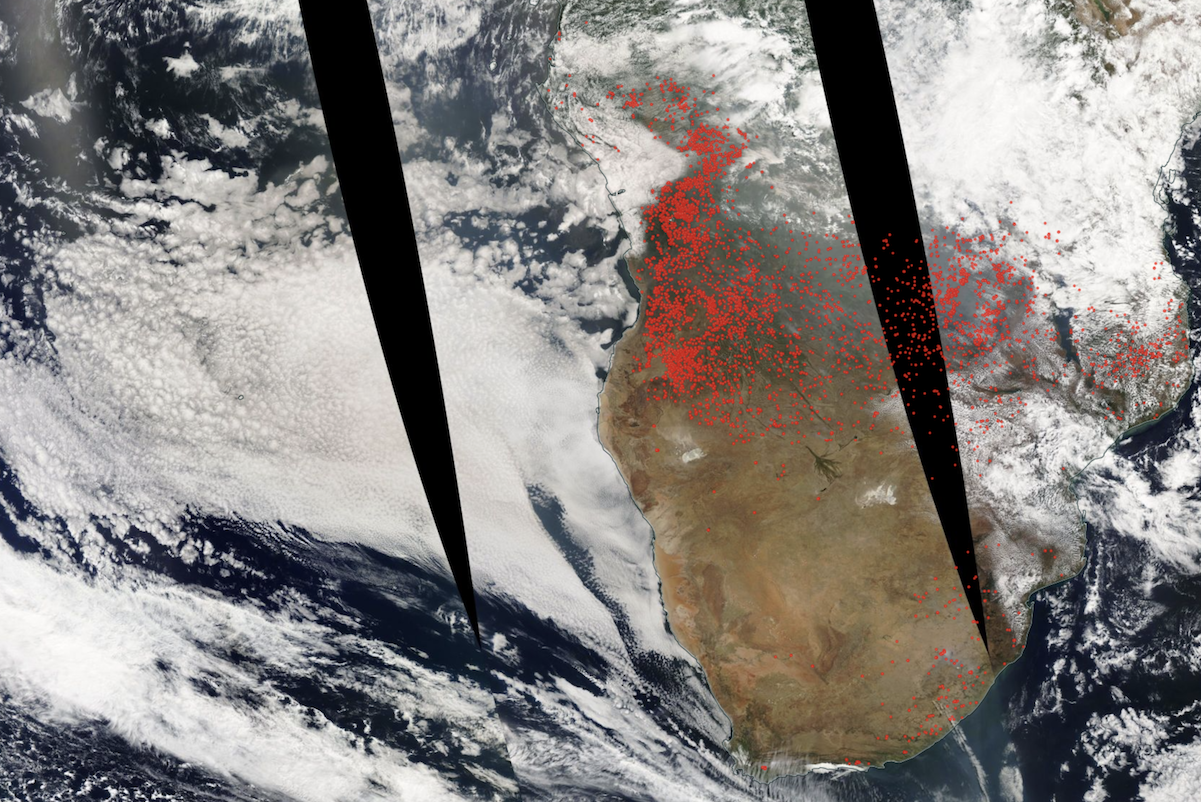
Smoke from wildfires can create a cooling effect in clouds
Smoke from wildfires can be harmful to personal health, as the pollutants it contains irritate the eyes, nose, throat, and lungs. Wildfires are also damaging to the surrounding environment as they can release untold quantities of stored carbon from trees into the atmosphere.
The negative impact of smoke is well known, but a new study found that surprisingly, smoke mixing with clouds over the Atlantic Ocean has a brightening and cooling effect.
Smoke from wildfires originating in South Africa may actually contribute to climate cooling because the smoke enhances the reflective capabilities of low-level clouds.
Researchers led by the University of Wyoming conducted the study, which was published in the journal Proceedings of the National Academy of Sciences.
For the study, the researchers used the National Center for Atmospheric Research (NCAR)-Wyoming Supercomputing Center to create high-resolution computational models to show how smoke from South Africa impacted clouds over the Atlantic.
“If you change the particles, you are changing the composition of the cloud,” said Xiaohong Liu, a corresponding author of the paper. “For our study, we found the smoke comes down and can mix within the clouds. The changed clouds are more reflective of sunlight. Brighter clouds counteract the greenhouse effect. It creates cooling.”
The models showed that carbon dioxide emissions create a greenhouse effect of 1.66 watts per square meter, while smoke from wildfires produces seven watts worth of a cooling effect per square meter over the southeast Atlantic each year.
During fire season, the smoke created by fires in South Africa is so great that satellite imaging can detect it. Aerosols in the smoke travel westward and mix with low lying clouds over the southeast Atlantic Ocean.
The aerosols, according to the results of the computational models, form condensation nuclei in the cloud which in turn increases the cloud’s brightness and reflective properties.
“Our group is the first to quantify this brightening effect,” said Liu. “This (smoke aerosols in clouds) reflects more solar radiation to space, which results in less solar radiation reaching the Earth’s surface. This creates a cooling effect.”
Ultimately the results show that smoke and cloud layers are closer together than previously thought.
Next, the researchers hope to quantify the cooling effect of aerosols emitted from other sources besides wildfires.
—
By Kay Vandette, Earth.com Staff Writer
Image Credit: NASA












